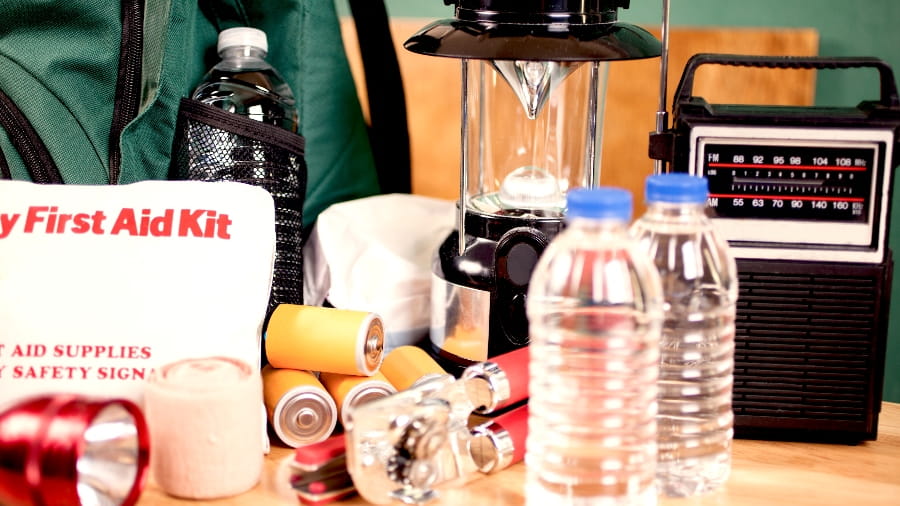The Best Way to Spring Clean Your Home (According to a Pediatrician)
As winter recedes and spring gets closer, some parents may feel overwhelmed by the upcoming season of cleaning. After all, it’s a lot of work to dust, wash and sanitize your home! Spring cleaning is an essential part of health and wellness, so just take it step-by-step. By involving children of all ages in the chores, focusing on specific germ-ridden areas of your home and making your own non-toxic cleaners, you can ensure that this year’s spring cleaning is both safe and effective.
Deep Cleaning Problem Spots
In addition to routine cleaning, it’s important to periodically deep clean your home. Spring is an ideal time to clean away all that winter grime! Your cleaning checklist should include:
-
Wipe down ceiling fans, baseboards and other hard-to-reach areas. These places can harbor dust, which can worsen seasonal allergies and asthma.
-
Wash all bedspreads, comforters, mattress and pillow covers in hot water using a safe, non-toxic laundry detergent. Mattresses and pillows especially serve as hideouts for dust mites and other allergy-causing things.
-
Scrub showers to remove any mold and/or mildew. This also reduces the amount of spores in the air in your bathroom.
-
Bathe your pets. Dogs, cats and other furry critters harbor dander that can worsen allergies and asthma. Pets can also carry pollen in from the outdoors.
-
Change your HVAC air filters. These should be changed monthly, especially during periods of heavy use. As an added bonus, clean air filters help reduce your HVAC system’s workload.
-
Wash removable furniture covers if you have them. Fabrics tend to trap odors, pollen, dander and other allergens.
Getting Your Children Involved
Having kids participate in family chores can give them purpose and make them feel like they’re contributing. When everyone pitches in, you’ll also free up more time for family fun. Younger children enjoy mimicking their parents’ cleaning habits and can do small chores as soon as they’ve developed basic motor skills. As kids get older, they can build on what they’ve learned. Just remember to try and make chores fun! If you treat domestic tasks as an annoyance, your kids will feel the same.
Here are several examples of chores listed by age group:
Toddlers
-
Pick up and put away toys
-
Help unload plastic items or silverware from dishwasher
-
Dust with a feather duster or microfiber rag
-
Sweep the floor
-
Collect dirty clothes and place in a hamper
-
Help put laundry into the washer or dryer (if they’re tall enough)
-
Put clothes away
-
Place pillows and blankets on the bed
Preschoolers
-
Load the dishwasher with supervision
-
Wash dishes by hand
-
Vacuum
-
Set and clear table
-
Wipe bathroom sinks with safe, non-toxic disinfectant wipes
-
Match clean socks together
Early elementary school
-
Help with food prep by washing produce or cutting with a butter knife
-
Wipe down bathroom counters and/or toilets
-
Collect the garbage
-
Get the mail
-
Fold the laundry and/or hang it out to dry
-
Clean the microwave (if they’re tall enough)
-
Rake leaves and pull weeds in the yard
Elementary school
-
Prepare simple meals
-
Take the garbage and recycling to the curb
-
Wash and dry clothes
-
Mop the floors
Middle school
-
Clean the tub and shower
-
Cook full meals and help plan meals
-
Clean out the fridge and freezer
-
Mow the yard with initial supervision
-
Wash the car
-
Supervise younger siblings’ chores
Make Your Own Kid-Friendly Cleaning Supplies
Before embarking on your spring cleaning, consider mixing up your own cleaning supplies. Cleaners are often filled with toxic chemicals, which can pose a risk to your family’s health and to the environment. Just make sure to keep them out of reach of young children who may see you mixing them and think they are safe to eat or drink. Here are a few ideas:
-
All-purpose cleaner: Mix one-half cup of white vinegar, 2 cups water, 1 teaspoon castile soap and 20 drops of an essential oil of your choice in a spray bottle.
-
Glass cleaner: Mix one-fourth cup of rubbing alcohol, one-fourth cup of white vinegar, 1 tablespoon of cornstarch and 2 cups of warm water in a spray bottle.
-
Furniture polish: Mix 2 tablespoons of lemon juice, 2 drops of lemon oil and 3 drops of olive oil in a bowl or bottle.
-
Scrubbing cleaner: Mix baking soda with a little water to form a scrub that’s great for tubs, sinks, showers and grout.
Note: As with any new cleaner, remember to test a small area in your home to make sure that it won’t stain or damage the surface.
Are You Interested in Learning More?
Sign up for our e-newsletter for more tips and best practices from pediatricians.
Sign Up Here









